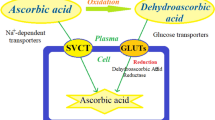Abstract
Zinc deficiency leads to decreased cellular immune responses. The overproduction of nitrogen species derived from inducible nitric oxide synthase (iNOS), its enzyme, and interleukine-1 beta (IL-1β), and inflammatory cytokine have been implicated in immune responses. The goal of this study was to investigate the effects of lipopolysaccharide (LPS)-induced changes in NO metabolites, iNOS, and IL-1β protein expression in the lungs of zinc-deficient rats. Male Sprague–Dawley rats (body weight, 100 g) were divided into two groups and were fed either a zinc-deficient diet (ZnD) or a zinc-containing diet (Cont). After 4 weeks on these diets, rats received a 10-mg/kg dose of LPS injected via the tail vein and were then maintained for an additional 72 h. To determine total NO concentrations in the blood, serum zinc concentration, iNOS protein expression, IL-1β, and iNOS immunohistochemistry, blood and lung samples were obtained at pre-LPS injection, 5, 24, and 72 h after injection. Total NO levels were significantly increased at 5, at 24, and at 72 h after LPS injection compared with pre-LPS injection level in ZnD group; significant changes in total NO levels was elevated at 5 h from at pre-LPS level but not significant changes from basal level at 24 and 72 h in the control group. Based on western blot analyses and immunohistochemistry, clear bands indicating iNOS and IL-1β protein expression and iNOS antibody-stained inflammatory cells were detected at 5 and 24 h in the ZnD group and 5 h in the Cont group, not observed at 24 and 72 h in the control group. These results suggest that zinc deficiency induces overexpression of iNOS and IL-1β proteins from inflammatory cells around the alveolar blood vessels, resulting in overproduction of total NO and persisted inflammatory response in the zinc-deficient rat lung. Taken together, overexpression of LPS-induced iNOS, overproduction of iNOS-derived NO, and overexpression of IL-1β may induce nitrosative and oxidative stresses in the lung, and these stresses may be involved low immunity of zinc deficiency states.





Similar content being viewed by others
References
Kogirima M, Kurasawa R, Kubori S et al (2007) Ratio of low serumzinc levels in elderly Japanese people living in central part of Japan. Eur J Clin Nutr 61:375–381
Vallee BL, Falchuk KH (1993) The biochemical basis of zinc physiology. Physiol Rev 73:79–118
Hashimoto H, Yabe T, Hirata T et al (2000) Expression of the zinc finger gene fez-like in zebrafish forebrain. Mech Dev 97:191–195
Williams TA, Corvol P, Soubrier F (1994) Identification of two active site residues in human angiotensin I-converting enzyme. J Biol Chem 269:29430–29434
Carroll IM, Andrus JM, Bruno-Bárcena JM et al (2007) Anti-inflammatory properties of Lactobacillus gasseri expressing manganese superoxide dismutase using the interleukin 10-deficient mouse model of colitis. Am J Physiol Gastrointest Liver Physiol 293:G729–G738
Thompson RW, Gilbreath RL, Bielk F (1975) Alteration of porcine skin acid mucopolysaccharides in zinc deficiency. J Nutr 105:154–160
Tassabehji NM, Corniola RS, Alshingiti A et al (2008) Zinc deficiency induces depression-like symptoms in adult rats. Physiol Behav 95:365–369
Haase HE, Mocchegiani E, Rink L (2006) Correlation between zinc status and immune function in the elderly. Biogerontology 7:421–428
Holgate ST, Lackie PM, Davies DE et al (1999) The bronchal epithelium as a key regulator of air way inflammation and remodeling in asthoma. Cli Exp Allergy 29:90–95
Murgia C, Lang CJ, Truong-Tran AQ et al (2006) Zinc and its specific transporter as potential targets in airway disease. Curr Drug Targets 7:607–627
Rubovitch V, Gershnabel S, Kalina M (2007) Lung epithelial cells modulate the inflammatory response of alveolar macrophages. Inflammtion 30:333–342
Abou-Mohamed G, Papapetropoulos A, Catravas JD et al (1998) Zn2+ inhibits nitric oxide formation in response to lipopolysaccharides: implication in its anti-inflammatory activity. Eur J Pharmacol 341:265–272
Omatsu T, Naito Y, Handa O et al (2010) Reactive oxygen species-quenching and anti-apoptotic effect of polaprezinc on indomethacin-induced small intestinal epithelial cell injury. J Gastroenterol 45:692–702
Wang KC, Wang SJ, Fan LW et al (2011) Lnterleukine-1 receptor antagonist ameliorates neonatal Lipopolysaccharide-induced long-lasting hyperalgesia in the adult rats. Toxicology 279:123–129
Casper RC, Kirschner B, Sandstead HH et al (1980) An evaluation of trace metals, vitamins, and taste function in anorexia nervosa. Am J Clin Nutr 33:1801–1808
Nodera M, Yanagisawa H, Wada O (2001) Increased apoptosis in a variety of tissues of zinc-deficient rats. Life Sci 69:1639–1649
Meret S, Henkin RI (1971) Simultaneous direct estimation by atomic absorption spectrophotometry of copper and zinc in serum, urine, and cerebrospinal fluid. Clin Chem 17:369–373
Sonoda M, Kobayashi J, Takezawa M et al (1997) An assay method for nitric oxide-related compounds in whole blood. Anal Biochem 247:417–427
Cui L, Takagi Y, Sando K et al (2000) Nitric oxide synthase inhibitor attenuates inflammatory lesions in the skin of zinc-deficient rats. Nutrition 16:34–41
Onal S, Nazıroğlu M, Colak M et al (2011) Effects of different medical treatments on serum copper, selenium and zinc levels in patients with rheumatoid arthritis. Biol Trace Elem Res 142:447–455
Stamme C, Walsh E, Wright JR (2000) Surfactant protein A differentially regulates IFN-gamma- and LPS-induced nitrite production by rat alveolar macrophages. Am J Respir Cell Mol Biol 23:772–779
Schrammel A, Gorren AC, Schmidt K et al (2003) S-nitrosation of glutathione by nitric oxide, peroxynitrite, and (*)NO/O(2)(*-). Free Radic Biol Med 34:1078–1088
Sirmali M, Uz E, Sirmali R et al (2007) Protective effects of erdosteine and vitamins C and E combination on ischemia-reperfusion-induced lung oxidative stress and plasma copper and zinc levels in a rat hind limb model. Biol Trace Elem Res 118:43–52
Lin NT, Yang FL, Lee RP et al (2006) Inducible nitric oxide synthase mediates cytokine release: the time course in conscious and septic rats. Life Sci 78:1038–1043
Acknowledgements
We thank Sumiko Satoh, who assisted in feeding a diet to kept animals every day.
Author information
Authors and Affiliations
Corresponding author
Rights and permissions
About this article
Cite this article
Miyazaki, T., Takenaka, T., Inoue, T. et al. Lipopolysaccharide-induced Overproduction of Nitric Oxide and Overexpression of iNOS and Interleukin-1β Proteins in Zinc-deficient Rats. Biol Trace Elem Res 145, 375–381 (2012). https://doi.org/10.1007/s12011-011-9197-4
Received:
Accepted:
Published:
Issue Date:
DOI: https://doi.org/10.1007/s12011-011-9197-4




